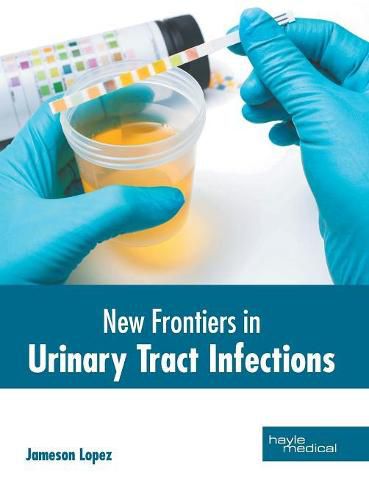Readings Newsletter
Become a Readings Member to make your shopping experience even easier.
Sign in or sign up for free!
You’re not far away from qualifying for FREE standard shipping within Australia
You’ve qualified for FREE standard shipping within Australia
The cart is loading…






This title is printed to order. This book may have been self-published. If so, we cannot guarantee the quality of the content. In the main most books will have gone through the editing process however some may not. We therefore suggest that you be aware of this before ordering this book. If in doubt check either the author or publisher’s details as we are unable to accept any returns unless they are faulty. Please contact us if you have any questions.
Urinary tract infections (UTI) are the most frequently occurring bacterial infection in women. It affects the lower and the upper urinary tract. Uropathogenic Escherichia coli bacteria from the gut are the causative agent of 80-85% of acquired UTI, while Staphylococcus saprophyticus contributes to 5-10% of the cases. The bacteria enter the bladder through the urethra. Infections may also occur via the lymph and blood. After entry into bladder, E. coli attaches to the bladder wall and forms a biofilm thus evading the body's immune response. Some of the risk factors associated with the incidence of UTI are the female anatomy, diabetes, obesity, sexual intercourse and family history. UTIs can be concerning in pregnant women as it increases the risk of kidney infections. A kidney infection during pregnancy may lead to pre-eclampsia or premature birth. Prescription of antibiotics such as nitrofurantoin, trimethoprim/sulfamethoxazole (TMP/SMX) or fluoroquinolone can be the treatment method for most UTIs. However complicated UTIs require more aggressive evaluation, treatment and follow-up. This book aims to shed light on some of the unexplored aspects of urinary tract infections and the recent researches in such conditions. It presents researches and studies performed by experts across the globe on UTIs. This book, with its detailed analyses and data, will prove immensely beneficial to professionals and students involved in this area at various levels.
$9.00 standard shipping within Australia
FREE standard shipping within Australia for orders over $100.00
Express & International shipping calculated at checkout
This title is printed to order. This book may have been self-published. If so, we cannot guarantee the quality of the content. In the main most books will have gone through the editing process however some may not. We therefore suggest that you be aware of this before ordering this book. If in doubt check either the author or publisher’s details as we are unable to accept any returns unless they are faulty. Please contact us if you have any questions.
Urinary tract infections (UTI) are the most frequently occurring bacterial infection in women. It affects the lower and the upper urinary tract. Uropathogenic Escherichia coli bacteria from the gut are the causative agent of 80-85% of acquired UTI, while Staphylococcus saprophyticus contributes to 5-10% of the cases. The bacteria enter the bladder through the urethra. Infections may also occur via the lymph and blood. After entry into bladder, E. coli attaches to the bladder wall and forms a biofilm thus evading the body's immune response. Some of the risk factors associated with the incidence of UTI are the female anatomy, diabetes, obesity, sexual intercourse and family history. UTIs can be concerning in pregnant women as it increases the risk of kidney infections. A kidney infection during pregnancy may lead to pre-eclampsia or premature birth. Prescription of antibiotics such as nitrofurantoin, trimethoprim/sulfamethoxazole (TMP/SMX) or fluoroquinolone can be the treatment method for most UTIs. However complicated UTIs require more aggressive evaluation, treatment and follow-up. This book aims to shed light on some of the unexplored aspects of urinary tract infections and the recent researches in such conditions. It presents researches and studies performed by experts across the globe on UTIs. This book, with its detailed analyses and data, will prove immensely beneficial to professionals and students involved in this area at various levels.